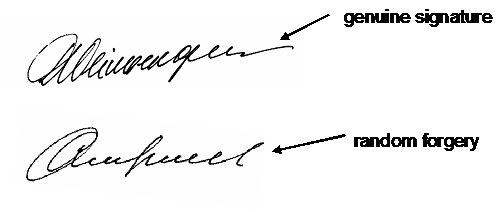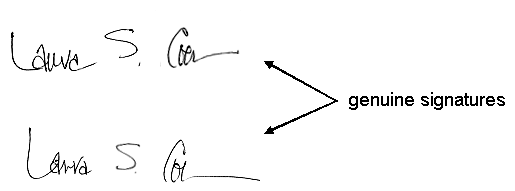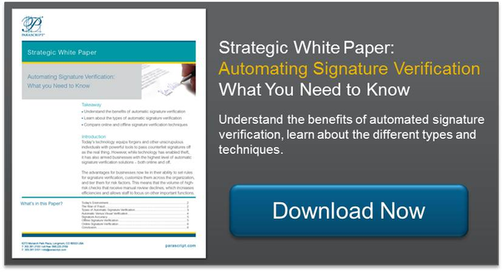Visual signature verification is one of the most common fraud prevention methods that has remained unchanged for many decades. Although criticized, visual verification is still used as the final arbiter when automatic signature verification cannot make a reliable conclusion, or makes the wrong conclusion about signature authenticity. How reliable is visual verification? How does visual verification accuracy compare with the accuracy of automatic signature verification systems? Why can a human operator and an automatic system make different conclusions about the same signature?
Visual verification is an inexact science and depends significantly on human factors such as expertise, fatigue, mood, working conditions, and many others. This is why a forensic handwriting expert, who has been verifying handwritten signatures for years and is able to look thoroughly for as long as necessary at every signature, will be able to produce more accurate signature verification results than a merchant or bank teller who only makes an educated guess as to whether the two signatures were, or were not, made by the same person. Similarly, a signature verification operator in a bank who has to look at 200-300 signatures per hour, not only has a lower accuracy than a forensic expert, but also makes more mistakes at the end of the day than in the morning. Sometimes the mistakes are so obvious that they do not require expertise or thorough examining to make the right conclusion. For example:
1. Genuine signature and random forgery that an operator accepted as an authentic signature:

2. One of two genuine signatures was rejected as a forgery by an operator:

The way to reduce this type of human errors is to rely on people with higher expertise and reduce the number of signatures one operator has to verify within a limited time frame. This is an expensive approach; however, automatic systems help to make it feasible.
The most advanced signature verification software exploits powerful artificial intelligence mechanisms to imitate human analysis and combines this human-like approach with the strengths of computer systems. Therefore, automatic systems can make definitive measurements and give more accurate appraisals of signature characteristics that some experts can only estimate using traditional techniques. Comparison of these measurements, from reference signatures to signatures submitted for verification, allows the software to show more accurate and consistent results in real-life applications, which usually require verification of a large number of signatures within a limited time frame.
Based on different principles and exploiting different strengths, a human operator and automatic signature verification software may make different conclusions about one particular signature. In the fight of man vs. machine, even individual erroneous cases do not change the fact that automatic verification solutions have proven to be statistically more accurate than humans. However, the race ends in a tie. Automatic signature verification systems should be used to verify the majority of images, sending only a smaller number of signatures that are considered to be suspects for human verification. The reduced burden on human operators allows them to scrutinize signatures more thoroughly and produce more accurate results, thus improving the overall accuracy of the verification process.




